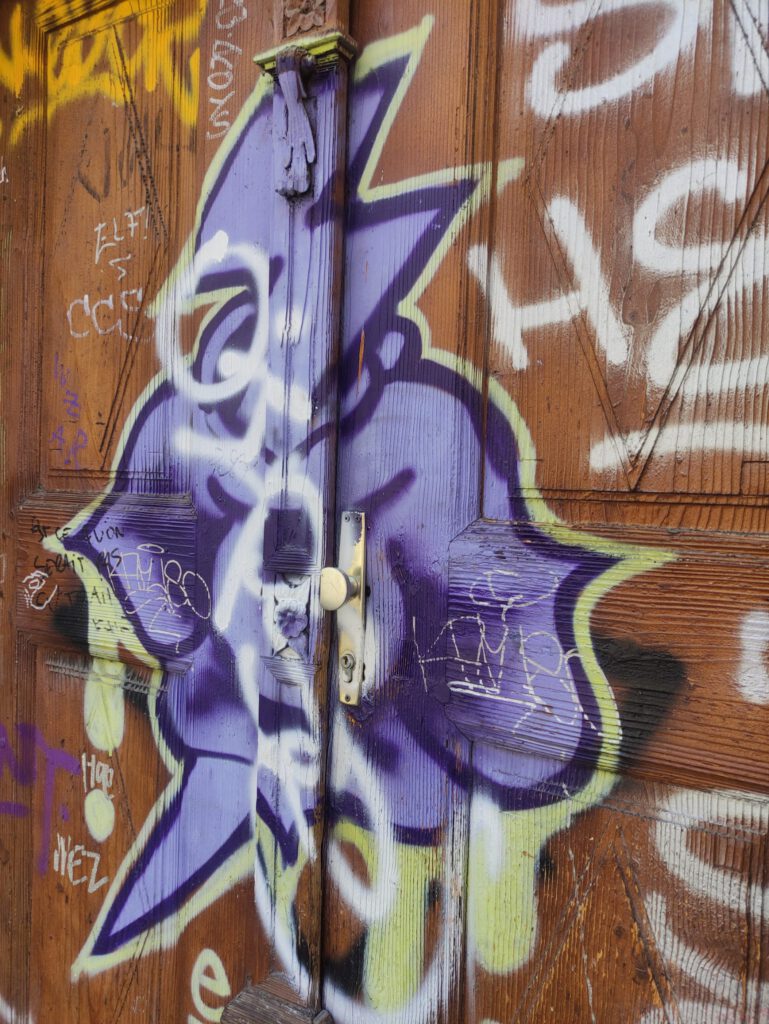The Story of Flower Graffiti: Blossoming in Urban Landscapes
Flower graffiti is a vibrant and imaginative form of street art that transforms urban spaces into colorful gardens of expression. By integrating floral imagery into the gritty environment of city streets, artists create striking contrasts and bring a touch of nature to concrete jungles.
The Concept of Flower Graffiti: Flower graffiti combines traditional graffiti techniques with floral themes, resulting in artworks that merge urban grit with the delicate beauty of flowers. Artists use bold colors and dynamic shapes to render a variety of floral forms, from intricate roses to abstract blooms. This style not only beautifies urban environments but also evokes emotions and conversations about nature, growth, and transformation.
Origins and Development: Flower graffiti began to gain popularity in the early 2000s as graffiti artists sought new ways to express themselves and challenge traditional graffiti motifs. Influenced by both classical art and contemporary design, artists began incorporating floral elements into their work to create a more diverse and visually appealing range of street art. The trend quickly spread, and flower graffiti became a prominent style within the urban art scene.
Key Characteristics and Techniques: Flower graffiti is characterized by its use of floral imagery and vibrant color palettes. Key elements include:
- Floral Designs: Artists render a wide variety of flowers, often with exaggerated or stylized features.
- Color Contrast: Bright, bold colors are used to make the flowers stand out against the often muted or gritty backgrounds of urban spaces.
- Techniques: Techniques may include spray painting, stenciling, and brushwork to create detailed and textured floral patterns.
- Integration: Flowers are often integrated into existing graffiti or urban elements, blending natural beauty with the surrounding environment.
Cultural and Artistic Impact: Flower graffiti has made a significant cultural impact by introducing elements of nature into urban art. It challenges the often harsh and industrial aesthetic of graffiti by offering a softer, more uplifting visual experience. This style also promotes discussions about environmental issues, the contrast between nature and urbanization, and the potential for art to improve public spaces.
Notable Artists and Works: Several artists have gained recognition for their contributions to flower graffiti. “Maya Hayuk,” known for her colorful, kaleidoscopic murals, often incorporates floral motifs into her large-scale works. Similarly, “Swoon” integrates botanical elements into her street art, creating pieces that blend seamlessly with their surroundings. Their work exemplifies the creative potential of flower graffiti and its ability to transform urban spaces.
Public Perception and Challenges: Flower graffiti is generally well-received for its aesthetic appeal and positive impact on public spaces. However, like all forms of graffiti, it can face challenges related to legality and property rights. Unauthorized artworks, even those with positive themes, can lead to conflicts with property owners and local authorities. Despite this, the growing acceptance of street art as a legitimate form of expression helps to mitigate some of these issues.
The Future of Flower Graffiti: The future of flower graffiti looks promising as artists continue to explore new ways to integrate floral designs into their work. Advances in paint technology and a growing appreciation for street art will likely drive further innovation in this style. Flower graffiti will continue to be a vibrant and influential aspect of urban art, bringing beauty and inspiration to city streets.
Conclusion: Flower graffiti is a dynamic and uplifting art form that combines the beauty of flowers with the energy of street art. By incorporating floral imagery into urban environments, artists create striking contrasts and foster a deeper connection between nature and the city. As this style continues to evolve, it will remain an important and inspiring part of the street art landscape.
